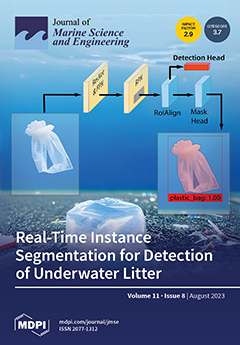The hydrocarbon source rocks of the marine carbonates of the Ordovician Majiagou Formation in the Ordos Basin are generally in the high-overmature stage and are, therefore, not suitable for hydrocarbon thermal simulation experiments. Their hydrocarbon generation potential and hydrocarbon generation characteristics are not clearly understood. Meanwhile, Nordic Cambrian carbonates are similar in lithology, parent material type, and sedimentary age, and are in the low evolution stage, which is suitable for hydrocarbon thermal simulation experiments. Therefore, in this study, we selected the Nordic carbonates for the gold tube thermal simulation experiment to analyze the content and geochemical characteristics of the thermal simulation products. The experimental results are also compared and analyzed with the characteristics of thermal simulation products of Pingliang Formation mud shale (contemporaneous with the Majiagou Formation) and Shanxi Formation coal (in the upper part of the Majiagou Formation), which are similar to the Majiagou Formation in the Ordos Basin. The results showed that the Nordic carbonate has different hydrocarbon production characteristics from the mud shale of the Pingliang Formation of the same parent material type, and although the hydrocarbon production yields of the two are not very different, the carbonate still produces methane at 600 °C. The hydrocarbon production yield of the Nordic carbonates is almost equivalent to that of type-II
2 kerogen, indicating that the hydrocarbon production yield is not related to lithology and only to the organic matter type; however, the Nordic carbonate can produce a large amount of H
2S. The alkane carbon isotope changes are mainly controlled by the degree of thermal evolution, showing gradual heaviness with increasing temperature. No carbon isotope sequence reversal occurred during the thermal simulation, and its distribution range is roughly the same as that of the alkane carbon isotope composition of the mud shale of the Pingliang Formation. The ethane carbon isotope composition is as heavy as −21.2‰ at the high-temperature stage, showing similar coal-type gas characteristics. The addition of calcium sulphate (CaSO
4) causes the TSR reaction to occur, which has a significant impact on the methane content under high maturity conditions, reducing its content by more than 50% at 600 °C. However, the addition of CaSO
4 increases the yield of heavy hydrocarbon gases, such as ethane, and promotes the production of C
6-14 hydrocarbons and C
14+ hydrocarbons at high-temperature stages, and the addition of CaSO
4 substantially increases the yield of H
2, CO
2, and H
2S. The thermal simulation results have implications for the hydrocarbon formation mechanism of the early Paleozoic marine carbonate formation system in the stacked basins of the Ordos Basin and the Tarim Basin in China.
Full article





